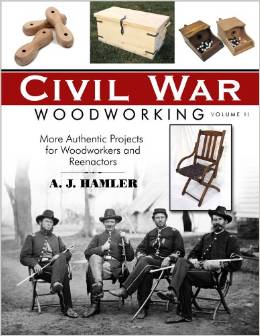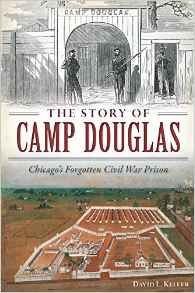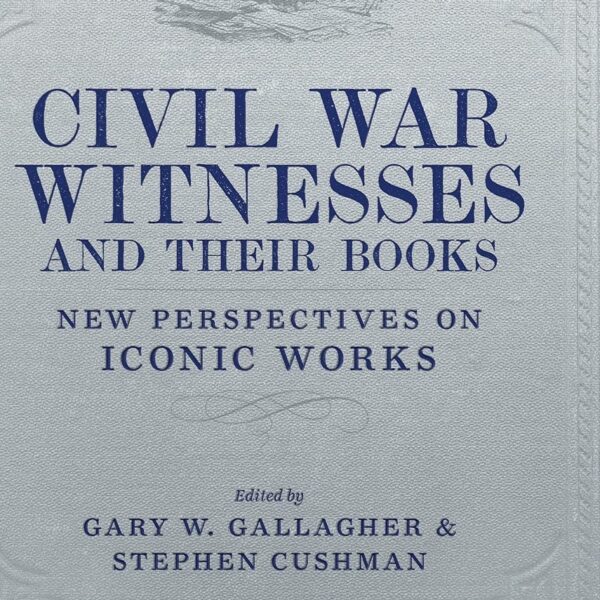Civil War Woodworking Volume II: More Authentic Projects for Woodworkers and Reenactors by A.J. Hamler. Linden Publishing, 2014. Paper, ISBN: 9781610351966. $24.95.
 In this well written, prolifically illustrated book, master carpenter and re-enactor A.J. Hamler presents detailed and easy to follow instructions for assembling fourteen unique projects that replicate Civil War furnishings. Readers will learn how to create facsimile shipping crates, a camp chest, a spurtle (a cooking implement from the period), a ballot box, shaving kit, tent slips, a button polishing board, a field cot, and several pieces of camp furniture. While this book will prove an invaluable resource for both re-enactors and Civil War enthusiasts with an interest in woodworking, what is most impressive about this handsome volume is the way that Hamler grounds each project in its historical context. Each project is introduced with a brief history lesson and is typically illustrated with period photographs from either the Library of Congress or National Archives.
In this well written, prolifically illustrated book, master carpenter and re-enactor A.J. Hamler presents detailed and easy to follow instructions for assembling fourteen unique projects that replicate Civil War furnishings. Readers will learn how to create facsimile shipping crates, a camp chest, a spurtle (a cooking implement from the period), a ballot box, shaving kit, tent slips, a button polishing board, a field cot, and several pieces of camp furniture. While this book will prove an invaluable resource for both re-enactors and Civil War enthusiasts with an interest in woodworking, what is most impressive about this handsome volume is the way that Hamler grounds each project in its historical context. Each project is introduced with a brief history lesson and is typically illustrated with period photographs from either the Library of Congress or National Archives.
Most of the projects included in this book are within reach for even novice woodworkers, and nearly all of them are fairly inexpensive to make. While Hamler has the benefit of a well stocked, state of the art woodshop, he provides clear instructions and alternatives for those who do not own expensive tools. Likewise, clearly labeled diagrams and photographs accompany step-by-step instructions. Comprehensive materials lists provide explicit dimensions, as well as useful information about working with various woods, glues, and fasteners.
Hamler’s projects are no facile imitations; the author’s original blueprints are the result of his own close study of period artifacts and photographs. In terms of actual construction, he maintains fidelity to the nineteenth century down to every last mortise and tenon. He even invites readers to utilize period correct cut nails, slotted screws, pins, and metal rivets, and reminds that softwoods were frequently utilized during the Civil War era.
This is a truly unique book. While several projects—in particular the folding camp chair and shaving kit—are quite intricate and will require more careful study, this superb guide will be a welcome addition to the library of any Civil War re-enactor or woodworking hobbyist. Even historians, especially as studies of the conflict pay closer attention to the war’s material culture, may find this book’s tidbits and crisply reproduced photographs of value. Who knew, for example, that soldiers used campfire ashes to polish their buttons? And who has ever noticed the wooden tent slip clearly visible over Lincoln’s right shoulder in the famous photograph of the president’s October 1862 visit to George B. McClellan’s headquarters tent? One can only hope that the author has yet another volume in store.
Ralph Jordan, the immediate past president of the Tallmadge Civil War Society, is a woodworker who writes from northeastern Ohio.




